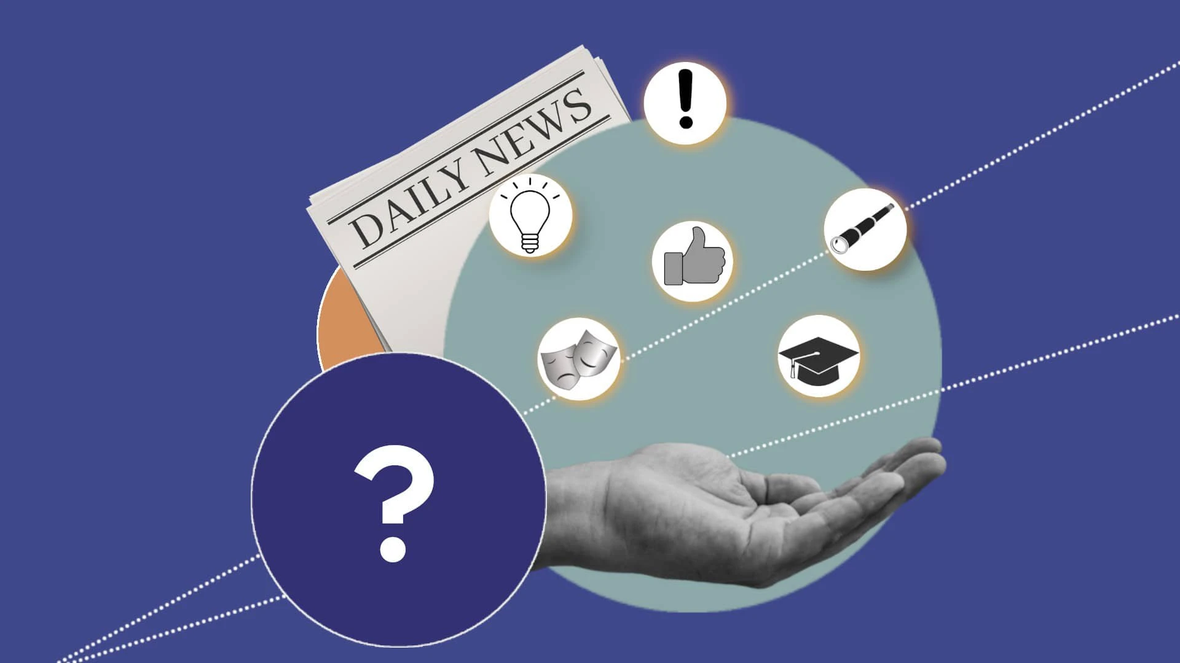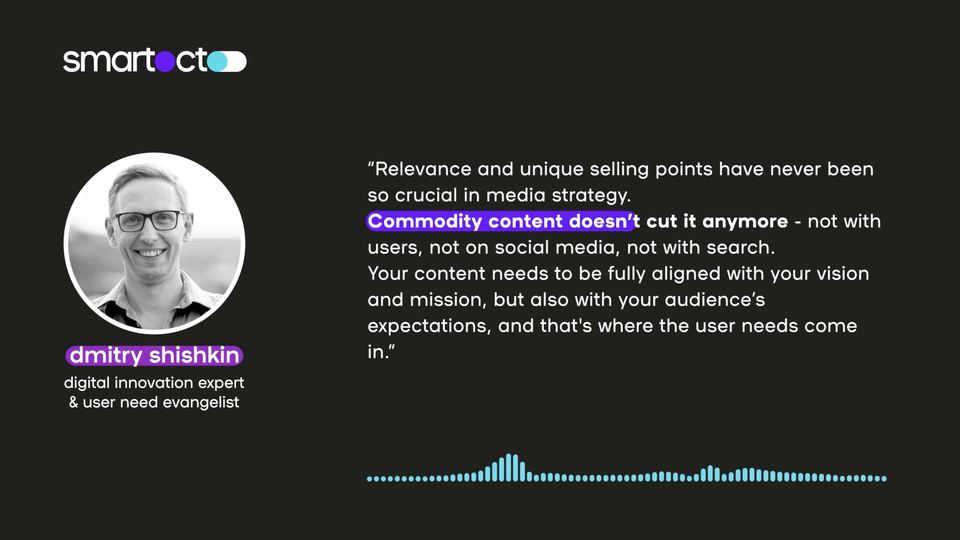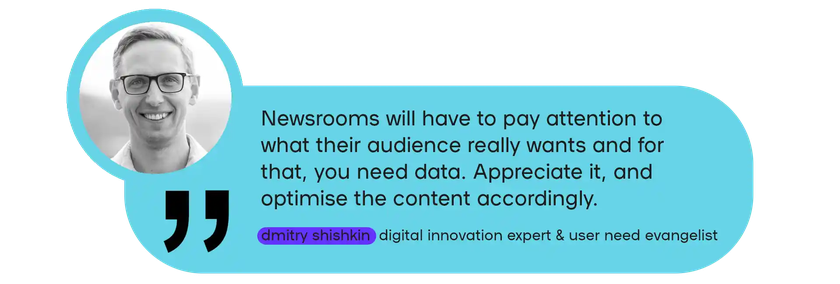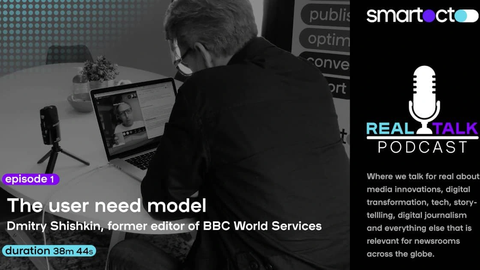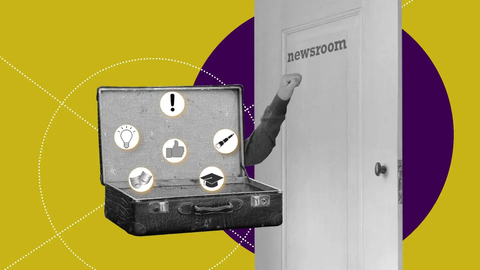UPDATE: We created a new User Need Model in March 2023. Check our page and download the whitepaper if you're interested!
We started the Triple N project to make our editorial analytics solution even more actionable. By fusing predictive analysis with a content commissioning model based on user needs, we hope to create notifications that help editors choose the best editorial approach for their next story. Why? Because we believe that adopting these user needs could have a massive impact on the newsroom.
We have joined forces with user need evangelist Dmitry Shishkin, who oversaw the adoption of the model across the BBC World Service. He started his career at the BBC in the 90s as a radio journalist and grew into a management position over the years. He brought in news technologies and tools to analyse and optimise performance, and help the teams do digital journalism better. When the user needs approach was developed, he immediately became its biggest advocate. He started promoting the model not only at the BBC, but also in his presentations and lectures around the world.
We caught up with Dmitry to talk about the background and benefits of the model, and how it ties in with data and smartocto.
We did a webinar about the User Needs Model 2.0. Watch the recording!
1. Why were user needs developed?
"The user needs model was developed by the audience research team of the BBC World Service when we were looking for new ways to connect with our audiences. Being a secondary news source in most countries, it was challenging for the BBC digital team to connect with users by just doing ‘agenda’ news, or ‘hard’ news, as we say. Most readers would have seen the headlines of the day already, before seeing BBC content. There was little need to fill the website with those same headlines; a new approach was needed.
